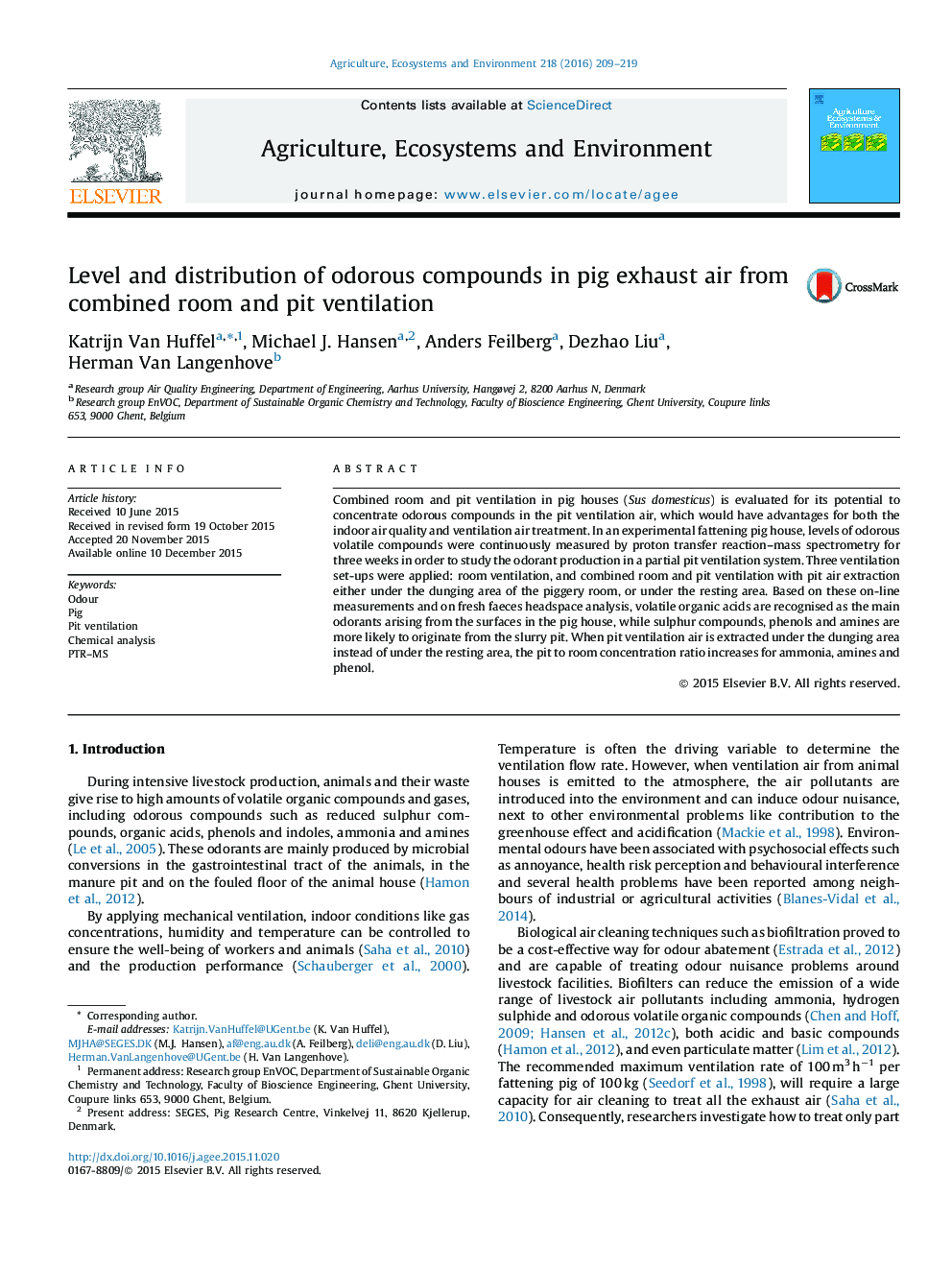| Article ID | Journal | Published Year | Pages | File Type |
|---|---|---|---|---|
| 8487564 | Agriculture, Ecosystems & Environment | 2016 | 11 Pages |
Abstract
Combined room and pit ventilation in pig houses (Sus domesticus) is evaluated for its potential to concentrate odorous compounds in the pit ventilation air, which would have advantages for both the indoor air quality and ventilation air treatment. In an experimental fattening pig house, levels of odorous volatile compounds were continuously measured by proton transfer reaction-mass spectrometry for three weeks in order to study the odorant production in a partial pit ventilation system. Three ventilation set-ups were applied: room ventilation, and combined room and pit ventilation with pit air extraction either under the dunging area of the piggery room, or under the resting area. Based on these on-line measurements and on fresh faeces headspace analysis, volatile organic acids are recognised as the main odorants arising from the surfaces in the pig house, while sulphur compounds, phenols and amines are more likely to originate from the slurry pit. When pit ventilation air is extracted under the dunging area instead of under the resting area, the pit to room concentration ratio increases for ammonia, amines and phenol.
Keywords
Related Topics
Life Sciences
Agricultural and Biological Sciences
Agronomy and Crop Science
Authors
Katrijn Van Huffel, Michael J. Hansen, Anders Feilberg, Dezhao Liu, Herman Van Langenhove,
